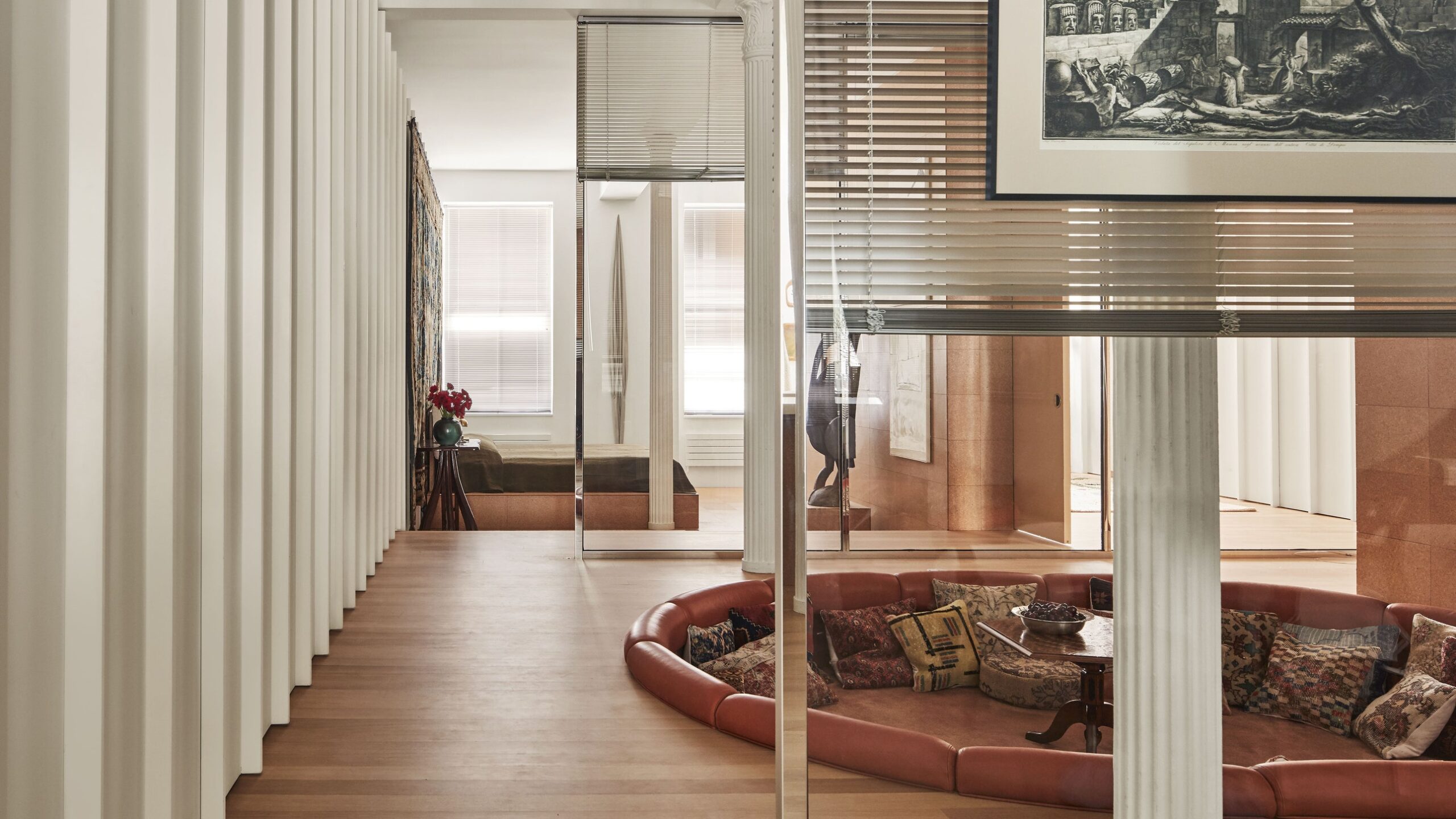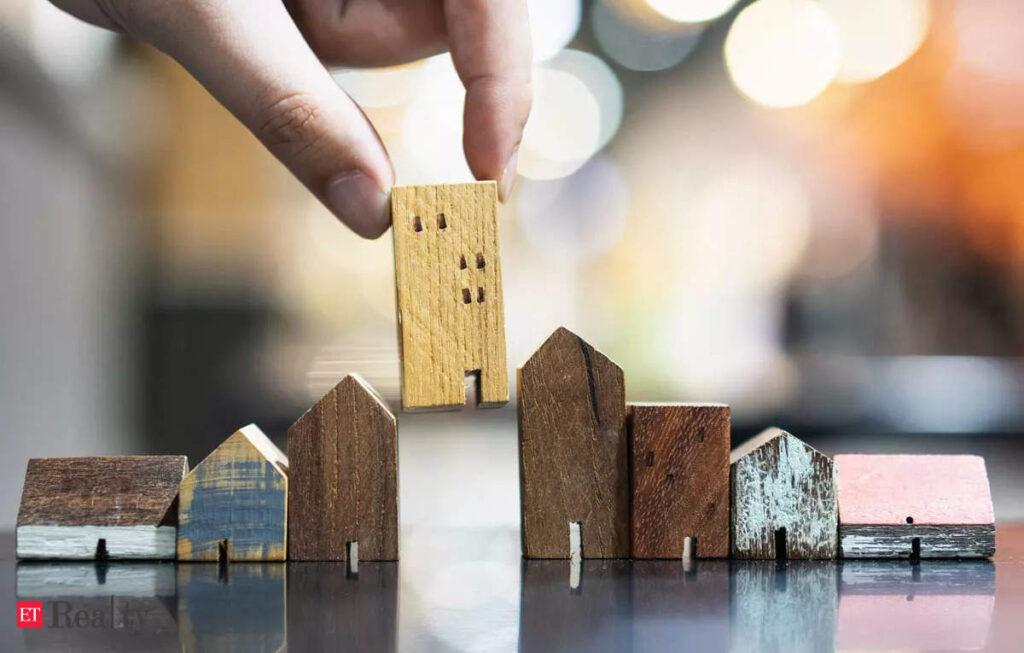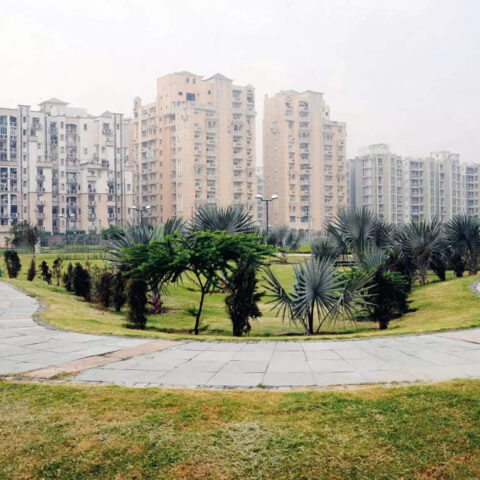Adam Charlap Hyman, of the AD100 firm Charlap Hyman & Herrero, entered the picture when they began to conceptualize the furniture—it started with a sofa (he created an L-shaped number with integrated reading lamps) and evolved from there. “Food had created a kind of impossible architecture,” recalls Charlap Hyman of the space he was shown. “The only way to work with it was to use things that were totally alien to this language.” Always rigorously academic in approach, he found a reference in the Russian home of Konstantin Melnikov, a strange 1920s cylindrical structure with diamond-shaped windows, filled with the architect’s family heirlooms.
Like Melnikov, Charlap Hyman looked to Biedermeier, finding an elegant set of dining chairs to surround the table he commissioned from contemporary terrazzo artists Ficus Interfaith. For the leather-sheathed conversation pit—one of Food’s original concepts—Charlap Hyman conjured something almost occult, furnishing the lounge with kilim-wrapped pillows and a 19th-century American pentagonal table. The strange atmosphere is only enhanced by the severed head of John the Baptist on a platter, as depicted in Hendrick de Somer’s 17th-century oil painting that hangs on the cork wall overhead. Similar uncanny moments—and art-historical mash-ups—unfold around the house: A verdure tapestry accents the bedroom, across from a contemporary sculpture by Eli Ping. A 20th-century tapestry was turned into an extra-large floor cushion in the living room, which congregates with gleaming chrome stools by Shun Kinoshita. Behind the dining table, Piranesi etchings (Charlap Hyman relates them to the “labyrinthian maze” of Food’s architecture) hang on a glass wall clad in aluminum blinds.
The blinds were the client’s idea—the designers had been experimenting with sheers, but when he saw a reference photo of a Japanese office, it was a light bulb moment. “They had this ’90s corporate cubicle vibe that I found really aesthetically pleasing,” he explains. It’s one of several industrial touches throughout the apartment that connects the decor and the architecture—a nod to the High Tech design movement, which celebrated the look of utility.
Still, in this home, the tech never overwrites pure decorative delight. Around every corner—and behind every cleverly concealed door—is a surprise. Off the main living room, a small, sun-drenched space serves as a cactus garden, hung with circa 1900 artworks in anthroposophical, hand-carved wood frames and planted with rare species from Cactus Store. In the office/guest room, the Murphy bed that pulls out of the wall is swathed in glazed cotton by Nathalie Farman-Farma. And then there’s The Shining bathroom, which, well, looks exactly like the bathroom in Stanley Kubrick’s The Shining.
“This home is designed like a machine,” says Charlap Hyman of the place, where a bed, speakers, a projector screen—even that DJ booth—are tucked out of sight. “A specific spot has been architecturally defined for each function of daily life.” After about a year in the apartment, its owners are still figuring out how they like to live with it. They use the conversation pit more for movie nights rather than a party hangout, as they expected. They close the interior blinds every night before they go to sleep. Yes, the shower is a little too big, but that’s where the client gets some of his best work done. The home continues to surprise them. And, as the client’s partner admits with a laugh, “we’re still opening the wrong cabinets.”
This SoHo apartment appears in AD’s February 2024 issue. Never miss an issue when you subscribe to AD.









